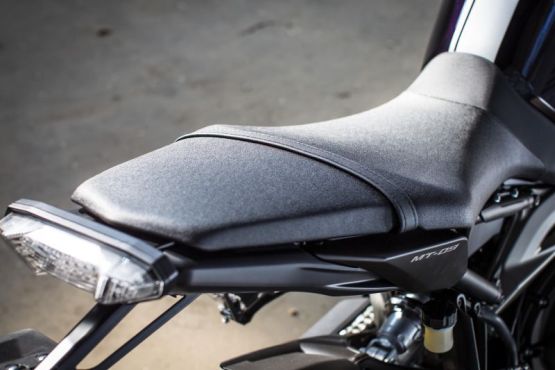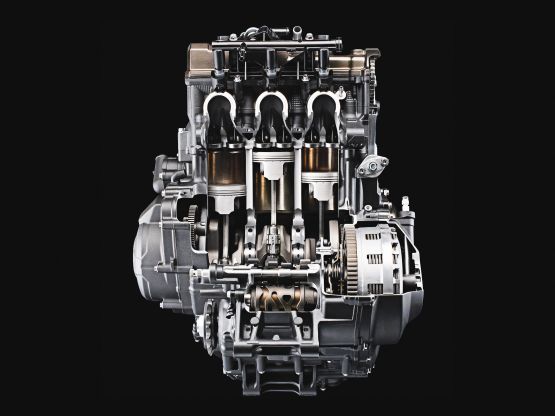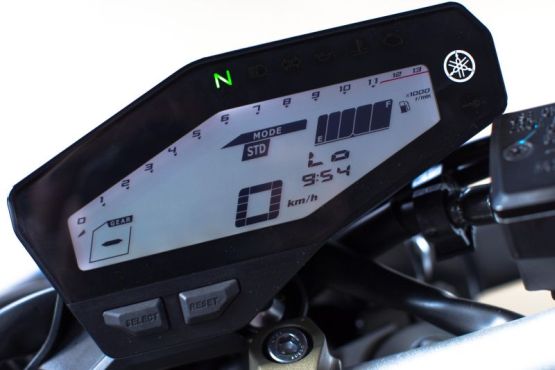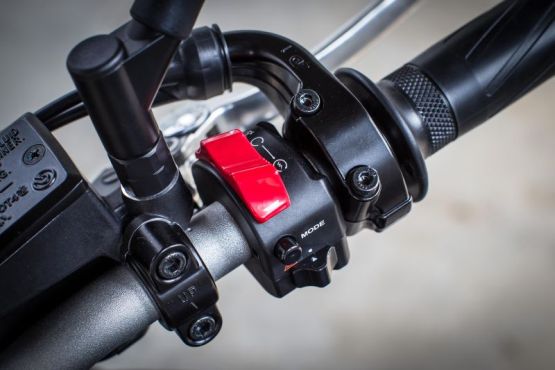There’s also a pleasingly simple view when you’ve thrown a leg over the seat, which is low, flat and quite narrow at the front, so should make the Yam manageable even for short riders. The small, angular digital display is offset slightly to the right, with the ignition lock on the left. The bars are raised and quite pulled back, giving an upright riding position that felt roomy in conjunction with reasonably rear-set footrests that are 25 cm lower than the FZ8’s.
The motor was designed for a broad torque spread more than for top-end power and from the moment that I let out the light-action clutch to pull away, there was no doubt that it delivers just that. As we headed off from the launch base, just down the coast from Split, the Yamaha immediately felt light, responsive and eager, accelerating effortlessly with a typically smooth three-cylinder feel.
It’s a superbly flexible powerplant, happy to send the MT-09 surging forward from below 4,000 revolutions per minute, then pulling harder through the mid-range and keeping going with a smooth rush of power towards the redline at 11,300 RPM. There’s enough grunt to encourage short-shifting and using the higher ratios, but the six-speed ’box was so slick and the Yamaha so addictively rev-happy, that it was generally even more fun to give my right wrist and left ankle more work by caning it through the gears. Shame there wasn’t more noise through the airbox and the exhaust’s mid-mounted silencer, which were disappointingly quiet even under hard acceleration.
For fast and furious road use the Yam was more than quick enough, at least in its two sportier riding modes. It ripped off the line with the front wheel itching to rise, accelerated past traffic at a hell of a rate given a tweak of throttle in the higher gears and sat at an indicated 130 km/h feeling utterly untroubled while I leant forward against the warm Croatian breeze. On one short straight it ripped up to an indicated 200 km/h, still with plenty left to a likely top speed of around 225 km/h.
Keeping tabs on speed with the digital instrument panel wasn’t a problem, but the console is rather cramped and the tacho bar’s numbers are too small to be easily read at a glance. I’m not sure why Yamaha didn’t just make the whole thing slightly bigger. With fuel gauge, consumption reading and gear indicator there should be enough info to keep most riders happy, but it’s a shame you can’t toggle through the display from the bars. Reaching forward to press buttons on the dash feels so last-century.
More seriously, the throttle response isn’t always as smooth as it should be. There are three riding modes, selectable with a small button on the right bar. On start-up you’re in ‘Standard’ and have the option of sportier ‘A’ or softer ‘B’, both of which keep the 115 PS max with differing throttle response from the ride-by-wire system. The trouble is, in either ‘Standard’ or ‘A’ the response is snatchy, snapping the bike forward almost as though there’s play in the transmission.
More on page 4 >






Leave a Reply